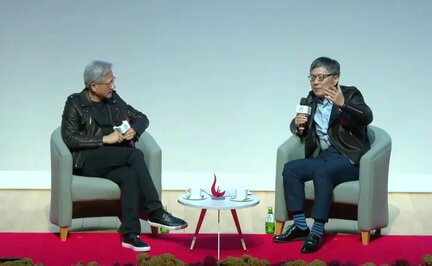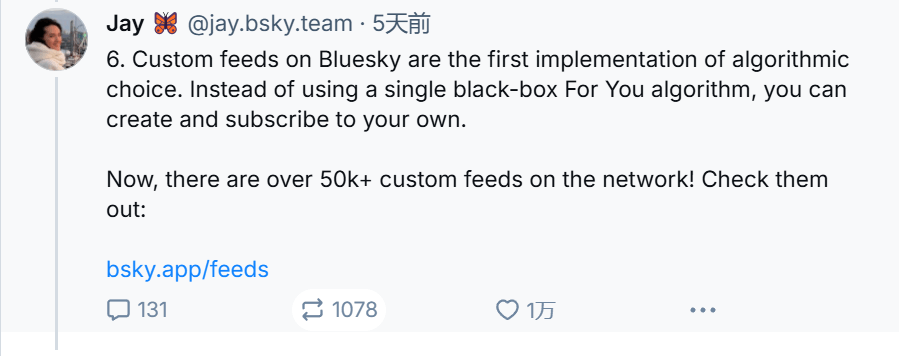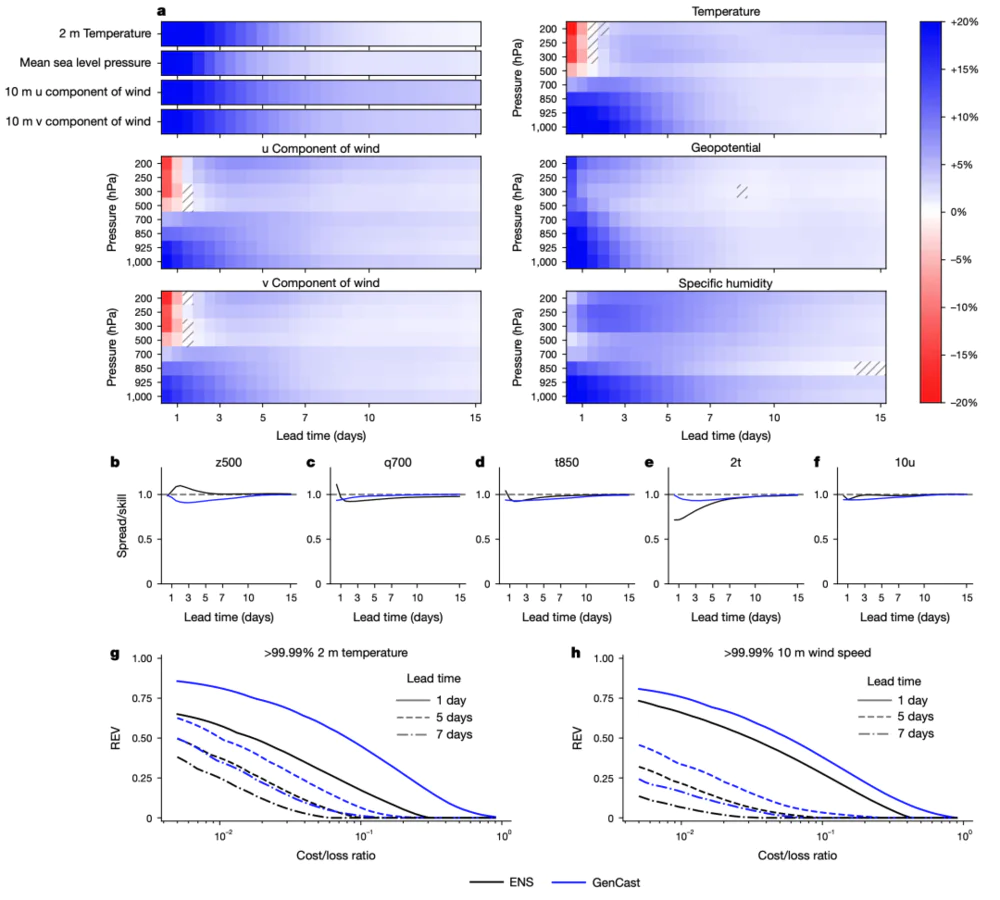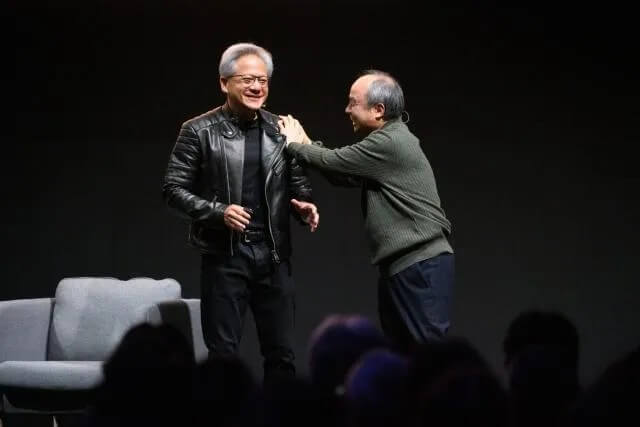In the global e-commerce battle, the competition between Amazon and the emerging e-commerce platform Temu has become increasingly intense. Amazon's recent launch of its low-cost marketplace, Haul, marks its official challenge to Temu's market share.
On November 8, Amazon Global Store’s first innovation center in the Asia-Pacific region officially opened in Shenzhen's Qianhai. On the opening day, Temu employees set up a recruitment booth right downstairs. Sellers invited to the Amazon opening ceremony were also approached by Temu staff asking if they were interested in joining Temu. For cross-border sellers like Wu Cheng, it seemed as if Temu was aggressively "taking over"—it was a bit overwhelming.
Amazon, the veteran in the e-commerce world, now appears to be caught up in the competitive frenzy.
On the first day of Black Friday, November 13, Amazon’s low-cost marketplace officially launched on mobile. A 3-piece set of mesh laundry bags for $2.89, Christmas-themed scarves and gloves for $3.99, with inventory always set at 5 pieces—everything about it screams "Pinduoduo vibe," according to Wu Cheng. "This is Amazon directly targeting Temu."
The name "so-low store" at the top of the Haul page on Amazon’s mobile site hints at Amazon's anxiety. Searching for "Haul" on Amazon’s mobile app takes you straight to it. The low-cost marketplace is filled with small home goods from Yiwu under $7, fashion accessories under $5, and many low-cost electronics similar to Huaqiangbei products. These inexpensive, white-label products weighing under 1 pound are exactly the kind of hot-selling items on platforms like Temu, SHEIN, and TikTok.

Half a year ago, Wu Cheng tried selling unsold stock from his warehouse on Temu. As Temu’s sales soared, he noticed that discussions about Temu stores became increasingly frequent in Amazon seller groups. Temu, by taking only a 20% commission, allowed him to clear inventory while saving millions on Amazon's advertising fees. It was a lucrative deal.
Many other Amazon sellers, just like Wu Cheng, have been poached by Temu. Now, some are returning to Amazon, joining the Black Friday Haul promotions, and discovering new business opportunities. At the start of Black Friday, Wu Cheng's products on Amazon Haul quickly began selling, with profits slightly higher than on Temu.
Meanwhile, U.S. consumers accustomed to shopping on Amazon are now finding similar products on Temu, often at lower prices. Amazon, long known for being "pirated" by other platforms, has now started digging at Temu’s foundations.
However, Amazon's attempt to directly replicate Temu's supply chain model, product selection, and promotional tactics seems to be following the paths of Taobao and JD.com.
In China, Taobao and JD.com once followed Pinduoduo into the low-price market and embraced Douyin, but now they have returned to their core competencies. This scenario seems to be repeating itself overseas: Amazon, too, has tied up with TikTok and is taking a defensive approach. Can Amazon's outcome be different this time?
1. “The First Batch of Sellers Led to an Overflow of Orders at Amazon.”
Like Wu Cheng, Huang Jue, one of the first sellers to join Amazon Haul, told LetterBang that Amazon’s defensive approach to following trends meant that sellers could only join by being invited by a recruiting manager. But after the first batch of sellers joined, some experienced a rush of orders that led to small inventory shortages. Many sellers estimate that they won’t receive another invitation to Haul until February next year.
With a large pool of sellers, Amazon has finally focused on a more price-sensitive customer base and started targeting Temu’s market share. On Amazon’s mobile app, the Haul marketplace is “low-key,” only accessible via search. But once you enter, it’s clear that Amazon has replicated Temu and SHEIN’s supply chain and promotional tactics 1:1.
On Amazon Haul, the highest price is capped at $20, and more than 50% of the products are white-label items priced under $10. A pair of $3 sneakers makes Ken, a resident of California, feel like he's browsing Temu’s site. Items such as $1 rings, small crystal bracelets, and Christmas-themed accessories evoke a strong SHEIN feel.
Unlike Amazon's usual main page, which features simple product descriptions, Haul highlights bold prices in red, such as $3.99 and $4.99, and displays inventory of only 5 items on the purchase page. “It feels a lot like Pinduoduo,” said one seller. Some product bundles, like a set of 3 phone screen protectors, are even cheaper than Temu’s prices.
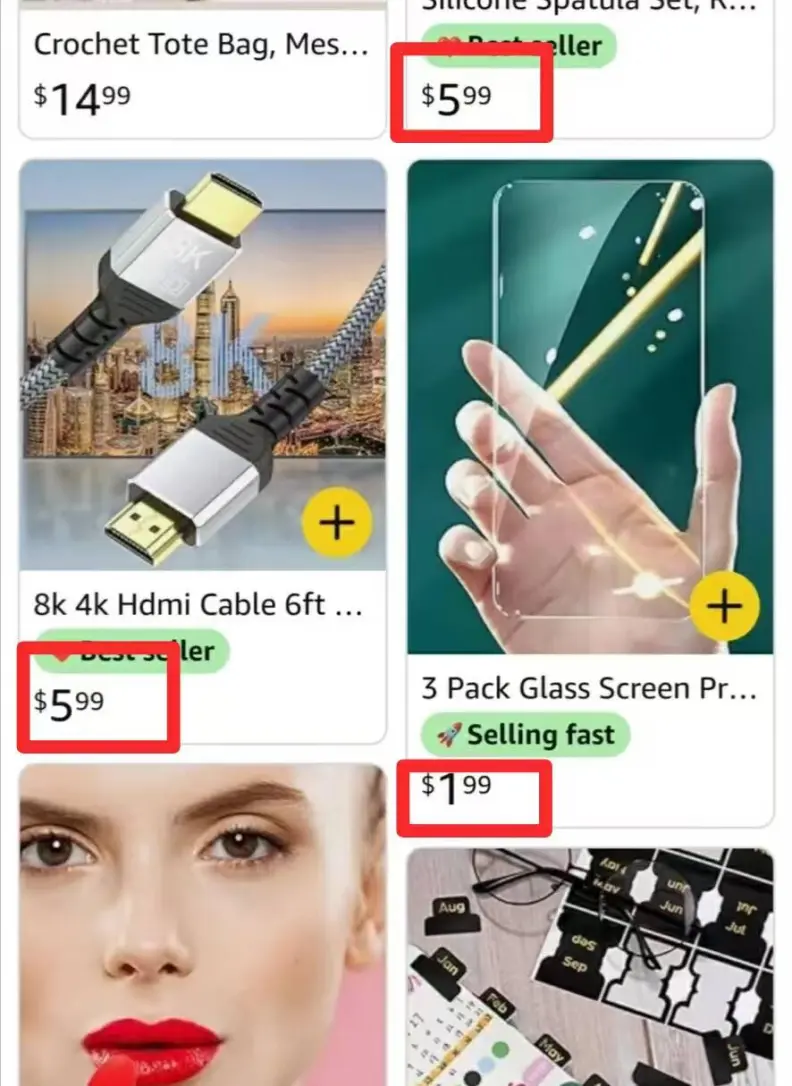
As one of the first sellers, Wu Cheng tentatively posted a few products with limited stock—only a dozen units. He didn’t expect two products priced at $3.99 and $4.99 to start selling immediately. Now, he’s selling 20-30 units a day without any operational staff, prompting him to add more stock.
Huang Yu also increased stock in Amazon’s warehouses in Guangzhou and Dongguan. For her, Amazon Haul feels like a targeted attack on Temu’s full-service model.
Besides the "Pinduoduo-like" low-price setup, products shipped to Amazon’s warehouses in Dongguan and then forwarded to the U.S. have shipping times similar to Temu’s. In addition, unlike Temu's refund-only policy, Amazon Haul allows sellers to offer refunds without requiring returns for items under $3—echoing the refund-only trend seen with Pinduoduo.
Amazon’s attempt to dig at Temu’s foundations is more aggressive. Huang Yu, for example, was bombarded with prompts to lower prices when selling on Temu, while on Haul, she has full control over product pricing. To clear stock, she even reduced all her items to under $5.
Now, more and more sellers are asking Huang Yu how to join Haul. Both former Amazon big sellers who have switched to Temu and Temu/SHEIN suppliers are eager to get into Haul and take advantage of the early-stage benefits.
After purchasing cheap products that turned out to be low-quality or incorrect on cross-border platforms, Ken is now less enthusiastic about platforms like the "Four Dragons" of overseas e-commerce. But Amazon Haul has restored his confidence. "It’s Amazon, so the quality should be guaranteed," he said.
2. Amazon’s Move into the Low-Cost Market, Heavily Influenced by Temu
According to Appfigures, Temu’s downloads among U.S. users aged 18-24 reached nearly 42 million, while SHEIN’s was around 14.7 million.
Meanwhile, Amazon, though still mainstream, urgently needs fresh blood from new users. Data from the third-party platform Euromonitor shows that Amazon's sales growth in the U.S. slowed in the first half of this year. Categories like apparel, footwear, jewelry, sports and outdoors, toys, and games saw year-on-year declines of 18%, 7%, and 13%, respectively.
Wu Cheng and Huang Yu also turned to Temu and TikTok to liquidate inventory in the first half of the year. Driving traffic from TikTok to Amazon stores has become standard, while Temu attracts many Amazon sellers with its massive traffic, offering free exposure.
In Q2’s earnings call, Amazon CFO Brian Olsavsky acknowledged that North American revenues fell below expectations, largely because consumers were more inclined to purchase affordable goods. The decline in average transaction value is a global trend. As the tide of consumer downgrade reaches the U.S., Amazon’s launch of Haul was both inevitable and a sign of desperation.
3. Black Friday This Year Seems Especially Lively
As Black Friday overseas increasingly mirrors China’s Double Eleven, both old-money Amazon and new-money Temu have begun to resemble each other.
Amazon is imitating Temu, using Haul to drive traffic through low prices and replicating the supply chain models of Temu and SHEIN.
Amazon has set up a warehouse in Dongguan, Guangdong Province, allowing merchants to ship directly from China to the U.S. Instead of requiring shipping from U.S. or overseas warehouses, which sacrifices speed, the 7-14 day shipping aligns with Temu's delivery times while saving on customs and storage costs.
Meanwhile, Temu and SHEIN emphasize semi-managed models, aiming to be faster and more comprehensive.
In terms of product categories, they are also learning from each other. Ken noticed that in addition to clothing and bags, SHEIN now offers many small appliances, while Temu, known for novelty items, has expanded into 3C electronics and even large appliances like robotic vacuum cleaners. Temu, which began as a full-service low-cost platform, has even learned from Amazon, setting up warehouses in the U.S. and introducing larger products like furniture, increasingly diversifying its product offerings.
But as Amazon adopts a Temu-like strategy, challenges arise.
Like the backlash against Taobao’s low-cost platform Taote, Amazon Haul’s launch has triggered concerns among some Amazon sellers. “If the same products are listed, we can only compete on price,” said Huang Yu, which further pushed her to rely on TikTok for external traffic.
Amazon must carefully balance between attracting new low-cost traffic and maintaining relationships with its existing high-end sellers. If it continues to push low prices and allow more white-label merchants to enter, it may see its top sellers leaving.
At the same time, low prices bring not only traffic but also complications.
LetterBang’s inspection of Amazon Haul revealed that many product images on the site violate Amazon's usual strict standards. Some images had prominent iPhone logos or were clearly AI-generated. The once pristine Amazon shopping experience has been undermined by cheap products that some users are likely to find disappointing. The “Pinduoduo-style” approach to products may eventually lower consumers’ loyalty.
Sellers are also paying the price of cutting prices—many have faced pressure from Amazon’s high commission rates and limited market support. While Temu and SHEIN offer lower commissions and higher support, Amazon faces fierce competition to maintain its foothold.
Conclusion:
Amazon's decision to launch Haul and focus on low-cost markets is a response to the growth of Temu. However, the long-term implications of this move are unclear, as Amazon attempts to balance attracting new, budget-conscious customers with maintaining its established base of premium sellers. Temu's global strategy remains to be seen, but one thing is certain: the global e-commerce race is far from over.

